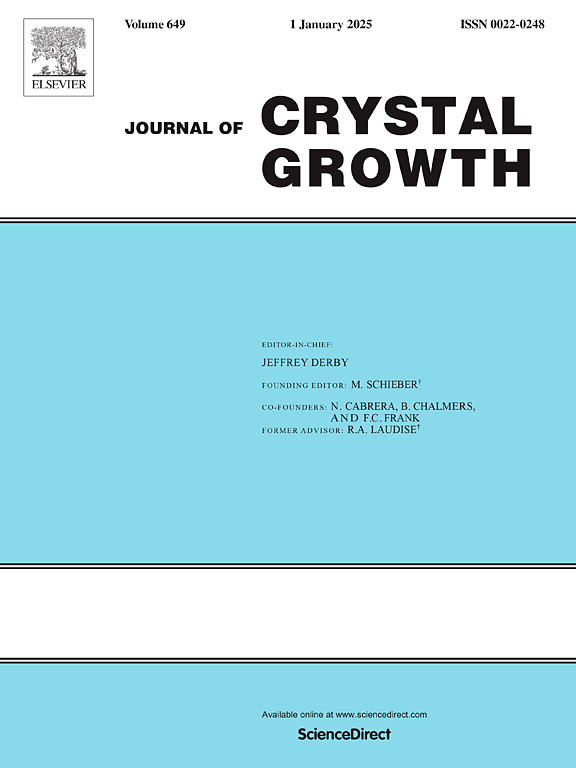Formation and breakage of chain-like in preparation of nano-sized precipitated calcium carbonate
IF 1.7
4区 材料科学
Q3 CRYSTALLOGRAPHY
引用次数: 0
Abstract
Nano-precipitated calcium carbonate (NPCC) exhibits multiple morphologies and unique properties to satisfy various requirements in industry. In this study, monodisperse and cubic NPCC were prepared by a solution mixing method using NaOH, Na2CO3, and CaCl2 as raw materials. The morphology of CaCO3 was controlled by the amount of NaOH in the precipitation process. X-ray diffraction (XRD), and scanning electron microscope (SEM) were employed for characterizations of CaCO3. The formation and the subsequent fission of nanofibril-like CaCO3 played an important role in the stages of NPCC preparation. The effects of pH, Ca2+, and Mg2+ concentration on the fission process were studied. The results indicate that the low pH, low Ca2+, and Mg2+ ions concentrations are beneficial to the fission of nanofibril-like CaCO3, and the correlation mechanism is proposed.
制备纳米级沉淀碳酸钙过程中链状物的形成和断裂
纳米沉淀碳酸钙(NPCC)具有多种形态和独特性能,可满足工业领域的各种要求。本研究以 NaOH、Na2CO3 和 CaCl2 为原料,采用溶液混合法制备了单分散和立方体 NPCC。CaCO3 的形态由沉淀过程中 NaOH 的用量控制。利用 X 射线衍射(XRD)和扫描电子显微镜(SEM)对 CaCO3 进行了表征。纳米纤维状 CaCO3 的形成和随后的裂解在制备 NPCC 的各个阶段发挥了重要作用。研究了 pH 值、Ca2+ 和 Mg2+ 浓度对裂变过程的影响。结果表明,低pH、低Ca2+和Mg2+离子浓度有利于纳米纤维状CaCO3的裂变,并提出了相关机理。
本文章由计算机程序翻译,如有差异,请以英文原文为准。
求助全文
约1分钟内获得全文
求助全文
来源期刊

Journal of Crystal Growth
化学-晶体学
CiteScore
3.60
自引率
11.10%
发文量
373
审稿时长
65 days
期刊介绍:
The journal offers a common reference and publication source for workers engaged in research on the experimental and theoretical aspects of crystal growth and its applications, e.g. in devices. Experimental and theoretical contributions are published in the following fields: theory of nucleation and growth, molecular kinetics and transport phenomena, crystallization in viscous media such as polymers and glasses; crystal growth of metals, minerals, semiconductors, superconductors, magnetics, inorganic, organic and biological substances in bulk or as thin films; molecular beam epitaxy, chemical vapor deposition, growth of III-V and II-VI and other semiconductors; characterization of single crystals by physical and chemical methods; apparatus, instrumentation and techniques for crystal growth, and purification methods; multilayer heterostructures and their characterisation with an emphasis on crystal growth and epitaxial aspects of electronic materials. A special feature of the journal is the periodic inclusion of proceedings of symposia and conferences on relevant aspects of crystal growth.
 求助内容:
求助内容: 应助结果提醒方式:
应助结果提醒方式:


